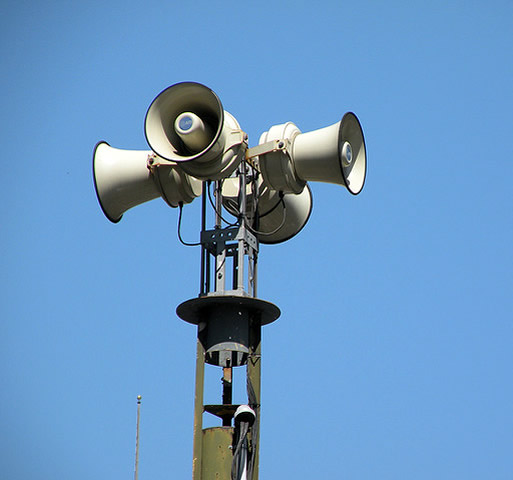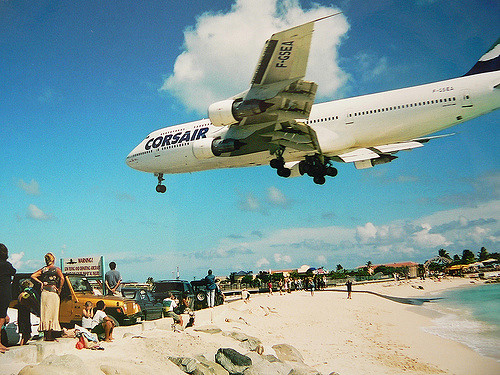 |
| Noise pollution |
Noise pollution is the intrusion of unwanted, uncontrollable, and unpredictable sounds, not necessarily loud, into the lives of individuals of reasonable sensitivities. Using the “reasonable person” standard removes the notion that the judgment of sounds as unwanted is subjective.
Unwanted sounds or noises can be traced back to Old Testament stories of very loud music and barking dogs as well as to ancient Rome where city residents complained about noisy delivery wagons on their cobblestone streets. The Industrial Revolution, the growth of cities, and the demand for transportation made the world even noisier.
With the modern world so dependent on and enchanted with noise-producing and noise-related technology—automobiles, aircraft, helicopters, motorcycles, snowmobiles, jet skis, leaf blowers, amplified music, bass-driven car stereo systems—the ambient noise level is rapidly accelerating. This growth in noise has led to research examining the impact of noise on the lives and activities of reasonable people. The result has been a body of evidence that strongly suggests noise is hazardous to good mental and physical health.
  |
To understand noise, one must know something about sound and how loudness is measured. Sound that travels through the air in waves has two major properties: the frequency or speed at which the waves vibrate and the intensity of each vibration. It is the intensity, or how many molecules are packed together with each vibration, that for the most part produces the sense of loudness, although frequency also contributes to the determination of loudness, with higher-pitched sounds sounding louder.
Loudness is measured by a decibel scale (expressed as dB), but to reflect human hearing more accurately a modified version of this scale, known as the A scale, has been developed. On the A scale, loudness is measured in dBAs.
The scale increases logarithmically so that an increase of 10 dB indicates a doubling of loudness, and an increase of 20 dB represents a sound that is four times louder. Whispers measure 20 dBA, normal conversation 50 to 60 dBA, shouting 85 dBA, and loud music over 120 dBA. Continuous exposure to sounds over 85 dBA may cause permanent hearing loss.
Exposure to very loud sounds that are enjoyable, and not technically noise to the listener, can lead to hearing impairment. Because many people, especially young children and teenagers, are not aware of the dangers of very loud sounds to their hearing, they should be warned that playing computer games with loud audio attachments, setting headsets at consistently high volume, or regularly playing ball in a loud gymnasium may affect their hearing over time. A survey of hearing threshold shifts among youngsters between the ages of six and nineteen found that one out of eight of them suffered a noise-related hearing problem.
Children attending loud movies and sporting events, or visiting video arcades may be unwittingly exposing themselves to dangerously loud sounds. Teenagers are especially vulnerable as they are more likely to equip their cars with high-powered “boom boxes,” attend loud dance clubs, and work in noisy fast-food restaurants.
Sounds need not be very loud to be deemed intrusive—for example, the drip of a faucet, an overhead jet, or a neighbor’s stereo late at night. Noises are especially bothersome at night when one is trying to sleep, and a good night’s sleep is vital to good health. Exposure to bothersome noises over time can be stressful, resulting in adverse health effects, such as hypertension. Although more research is needed to solidify a noise and health link, there is agreement that noise lessens the quality of life.
   |
Noises can be especially harmful to children. Scientific research indicates that noisy homes slow down cognitive and language development in young children. In addition, children living and attending schools near noisy highways, railroads, and airports have lower reading scores, and some children living or attending a school near a major airport have experienced elevated blood pressure.
In 1972 the U.S. government passed legislation recognizing the growing danger of noise pollution. It empowered the Office of Noise Abatement and Control (ONAC) within the Environmental Protection Agency (EPA) to curtail noise levels, but by 1982, during the Reagan administration, the office lost most of its funding.
States and cities were no longer supported in their efforts to abate noise, and ONAC no longer published materials educating people on the dangers of noise. Recently, the federal government has passed legislation to lessen noise in national parks, for example, banning snowmobiles, but states and cities are on their own in controlling noise, with some cities more successful than others.
 |
| aircraft noise |
Traffic noise, especially aircraft noise, is the major source of annoyance calling for better federal regulation within the United States. In contrast, the European Union is finalizing a noise directive that will require member states to produce noise maps and develop action plans to reduce noise levels.
Noise from snowmobiles, jet skis, and supersonic jets has also intruded on the environment, affecting animals’ abilities to communicate, protect their young, and mate. Worldwide, antinoise groups believe their governments are doing too little to lessen the surrounding din, and groups from the United States, Europe, Canada, Australia, Africa, and Asia have joined together to educate both the public and governments about the long-term dangers of noise pollution, urging them to lower the decibel level. A quieter, healthier environment is within our grasp.
